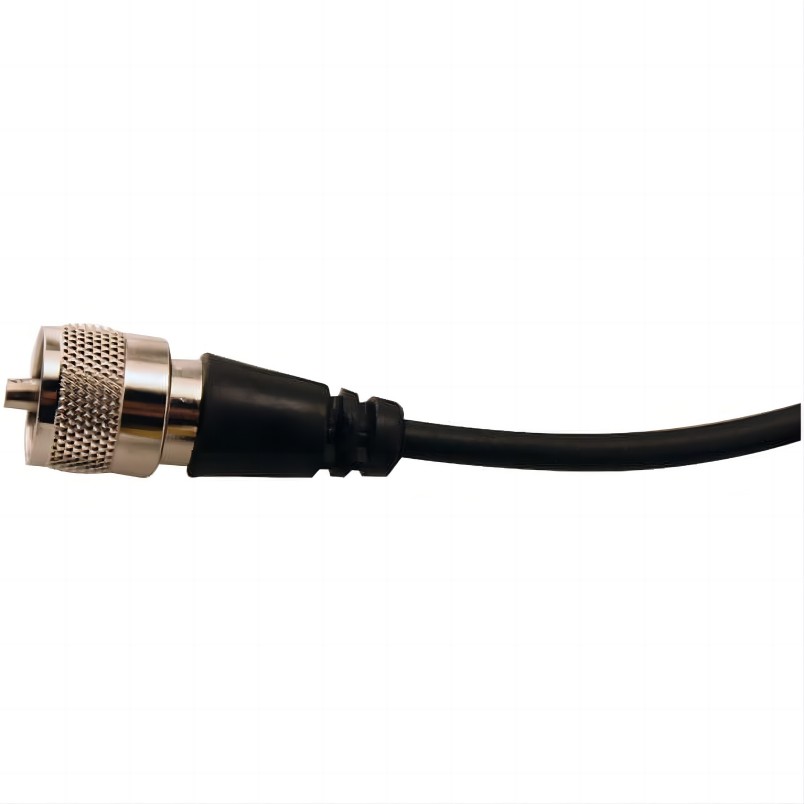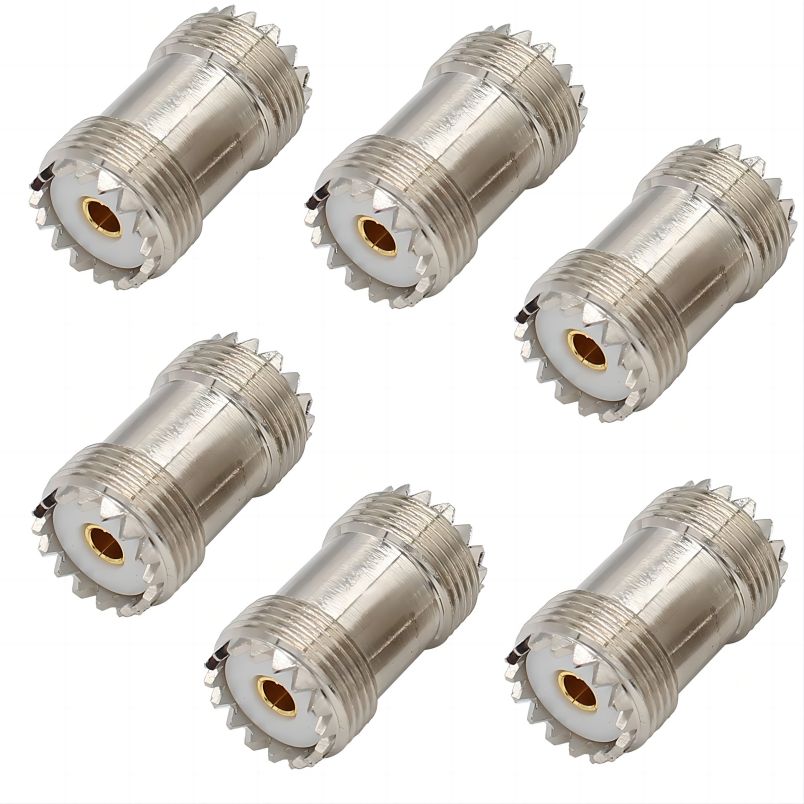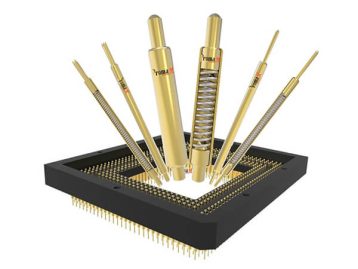Communication relies on clarity and reliability. Whether you’re a trucker or radio enthusiast, a well-structured CB radio system is crucial. CB connectors, often underestimated, ensure clear and uninterrupted communication.
This guide explains CB connectors, their types, functions, and importance. Whether you’re new to CB radios or a pro, it’s your resource for mastering these components.
By the end, you’ll make informed decisions, enhance your CB radio’s performance, and ensure smooth communication on the road or in the wild.
Understanding CB Radio Systems
CB radio systems, or Citizens’ Band radios, have been there for decades. They’re two-way radios for short-range communication, serving personal, business, and emergency purposes.
CB radios use specific frequency bands designated by governments. In the United States, they operate on the 27 MHz band. They excel in short-distance communication, making them valuable for:
- They enable long-haul truckers to share road information and provide company during journeys.
- Campers, hikers, and off-roaders rely on CB radios in remote areas with weak or no cell signal.
- In emergencies and natural disasters, they serve as a reliable communication lifeline when other methods may fail.
The Timeless Allure of CB Radios: Then and Now
CB radios soared in popularity during the 1970s and 1980s, becoming iconic symbols of adventure and the free spirit of the era. Despite the advent of smartphones and advanced communication tech, CB radios maintain a loyal following.
Their enduring appeal lies in their simplicity and reliability. Unlike complex systems, CB radios are easy to use and maintain, offering a direct line of communication on dedicated channels.This straightforward design facilitates long-range communication and makes CB radios dependable for various scenarios.
Basic Components Of A CB Radio System
- To grasp the role of CB connectors, let’s explore the key parts of a CB radio system:
- CB Radio Transceiver: The central unit for signal reception and transmission.
- Microphone: Your voice’s conduit to the world, capturing and transmitting your messages.
- Antenna: Vital for receiving and sending radio signals, ensuring strong and clear communication.
- Power Supply: Typically operates on 12-volt power from a vehicle battery or dedicated power supply.
- CB Connectors: They link the microphone to the radio, enabling your voice to transform into radio waves for transmission.

Types Of CB Connectors
BNC Connector
This quick-connect RF connector is ideal for handheld CB radios and scanners, favored for its easy setup and disconnection.
TNC Connector
Similar to the BNC, it features a threaded connection for easy attachment and detachment, suitable for user-friendly applications.
SO-239 Connectors
Known as the UHF female connector, they pair with the PL-259, offering durability and weather resistance for outdoor use.
Coaxial Connectors
Crucial for connecting the CB radio to the antenna, they come in various types like N-type and UHF, providing reliable signal transmission for clear communication.
N Connector
Renowned for its low-loss characteristics, it’s preferred in high-end CB radio systems, ensuring excellent signal integrity over long distances.
PL-259 Connector
Also called the UHF connector, it is robust and widely used, known for its secure threaded connection and reliable performance.
The Role Of CB Connectors In CB Radio Systems
CB connectors are crucial parts of your CB radio system. They link system components and play a pivotal role in various situations, such as when you’re on the road, in the wilderness, or facing critical moments. Their key roles are as follows:
Signal Transmission and Connectivity
They establish essential pathways for electrical signals to travel between the microphone, radio transceiver, and antenna. They maintain strong connections, preventing static or signal loss.
Durability and Weather Resistance
Designed for outdoor use, weather-resistant connectors like the SO-239 can withstand harsh environmental conditions, ensuring reliable communication in challenging weather.
Compatibility and Versatility
With various connector types like BNC and TNC, CB connectors offer compatibility with different CB radio models, enhancing the system’s flexibility for diverse applications.

Maintenance And Care Of CB Connectors
Maintaining your CB connectors is essential for reliable communication. Here’s a guide to help you keep them in top condition:
- Maintain Connector Hygiene: Preserving clean connections is paramount. Employ a soft-bristle brush with compressed air for a delicate and thorough cleansing.
- Inspect for Wear: Regularly check for bent pins, corrosion, or loose connections. Address issues promptly.
- Tighten Loose Connections: Periodically ensure all connections are secure, but avoid overtightening.
- Protect from Weather: Use covers or weather-resistant options to shield connectors from extreme conditions.
- Use Dielectric Grease: Apply a thin layer to protect from moisture and corrosion.
- Establish a Maintenance Schedule: Regularly inspect and clean connectors every few months.
Proper care ensures clear and reliable communication, preserving your CB radio system’s integrity.
Common Problems: Troubleshooting CB Connectors
Even the best connectors can run into issues from time to time. Understanding and troubleshooting these problems can help you get back on the airwaves quickly.
Troubleshooting Guide
- No Transmit or Receive: If you can’t transmit or receive messages, check the connections between the microphone and the transceiver. Loose or damaged connectors can be a common culprit.
- Static or Interference: Poorly connected or damaged connectors can introduce static or interference. Inspect and clean the connectors to ensure a clear signal.
- Reduced Range: If your range has suddenly decreased, connectors could be a contributing factor. Check for loose or damaged connectors between the transceiver and the antenna.
- Audio Quality Issues: If you’re experiencing audio distortion, it may be indicative of connector-related concerns. Ensure all connections are securely installed and free from any discernible damage.
Choosing The Right CB Connectors
Choosing the appropriate CB connectors is essential for an effective and reliable CB radio system. Follow these tips for informed selection:
- Check your radio model: Consult your user manual to find the connector type compatible with your radio.
- Prioritize quality: High-quality connectors offer better signal transmission and longevity, ensuring dependable communication.
- Weather resistance: For outdoor or exposed usage, opt for weather-resistant connectors like SO-239 for durability in adverse conditions.
- Ease of use: Consider your comfort level with installation and maintenance, choosing connectors that match your skills.
- Seek expert advice: Consult experienced CB radio enthusiasts for recommendations.
- Budget wisely: Balance quality and budget to ensure reliable communication and performance.
Selecting the proper connectors ensures compatibility, durability, and a seamless communication experience for your CB radio system.

How To Install CB Connectors?
Here’s a straightforward step-by-step guide to installing CB connectors:
Step 1: Gather Your Tools
- Collect these essential items:
- CB radio system
- Your chosen CB connector
- Coaxial cable
- Screwdriver
- Pliers
- Electrical tape
Step 2: Prepare Your Workspace
Find a well-lit, distraction-free workspace for your installation.
Step 3: Disconnect the Power
Turn off your CB radio and unplug it for safety.
Step 4: Remove the Old Connector
If you’re replacing a connector, use a screwdriver and pliers to remove the old one.
Step 5: Prepare the Coaxial Cable
Strip the coaxial cable carefully to expose the inner conductor and insulation. Use the right tools to avoid cable damage.
Step 6: Connect the New Connector
Securely attach the new CB connector to the coaxial cable, following the connector’s specific method.
Step 7: Secure the Connector
Use electrical tape to prevent movement and moisture; keep the connector and cable in place.
Step 8: Reconnect and Test
Plug your CB radio back in and test communication. Ensure clear audio and no interference.
How to Buy CB Connectors?
Now that you understand what to seek in CB connectors and how to install them, the next step is finding the appropriate connectors for your needs. Here is a buyer’s guide to CB Connectors for you.
- Identify Your Needs: Match the connector to your CB radio system’s requirements.
- Research Brands: Opt for reputable brands with a track record of quality, like Promax Pogo Pin.
- Check Reviews: Read user feedback and recommendations to gauge product performance and durability.
- Seek Expert Advice: Consult experts or experienced CB radio enthusiasts for guidance.
- Consider Your Budget: Quality connectors are available at various price points.

Conclusion
CB connectors are the backbone of clear and reliable communication on your CB radio, whether you’re a trucker, enthusiast, or need emergency communication.
To ensure your voice is heard when it matters, understanding CB connectors is essential. High-quality connectors, maintained well, guarantee your CB radio system remains reliable throughout your journeys.Keep them clean, secure, and weather-resistant for uninterrupted communication on the open road.
Choose Promax Pogo Pin for Quality Connectors
When seeking top-notch connectors, look to Promax Pogo Pin. Their expertise in manufacturing pogo pins and PCB connectors has earned them a solid reputation.
FAQs
Do I need to replace CB connectors when upgrading my CB radio system?
Assess new equipment for compatibility. Upgrades may require changing connectors.
Can I use adapters to make different connector types work together?
Adapters can bridge connector types but may affect signal quality.
Are there specific connectors for mobile vs. base station CB radios?
Mobile and base station CB radios may require different connectors; ensure compatibility.
What’s the difference between soldering and crimping connectors?
Soldering and crimping are methods for attaching connectors; choose based on your application.
How do I prevent connector corrosion in coastal or high-humidity areas?
Prevent corrosion with weather-resistant connectors, anti-corrosion compounds, and regular maintenance.
Can I use CB connectors for other radio systems or applications?
Check compatibility and potential modifications when using CB connectors in other systems or applications.
 Over 15 Years of Expertise
Over 15 Years of Expertise FREE samples provided to ensure product satisfaction
FREE samples provided to ensure product satisfaction Rapid Turnaround: Mass Production Complete in 15 - 20 Days
Rapid Turnaround: Mass Production Complete in 15 - 20 Days











